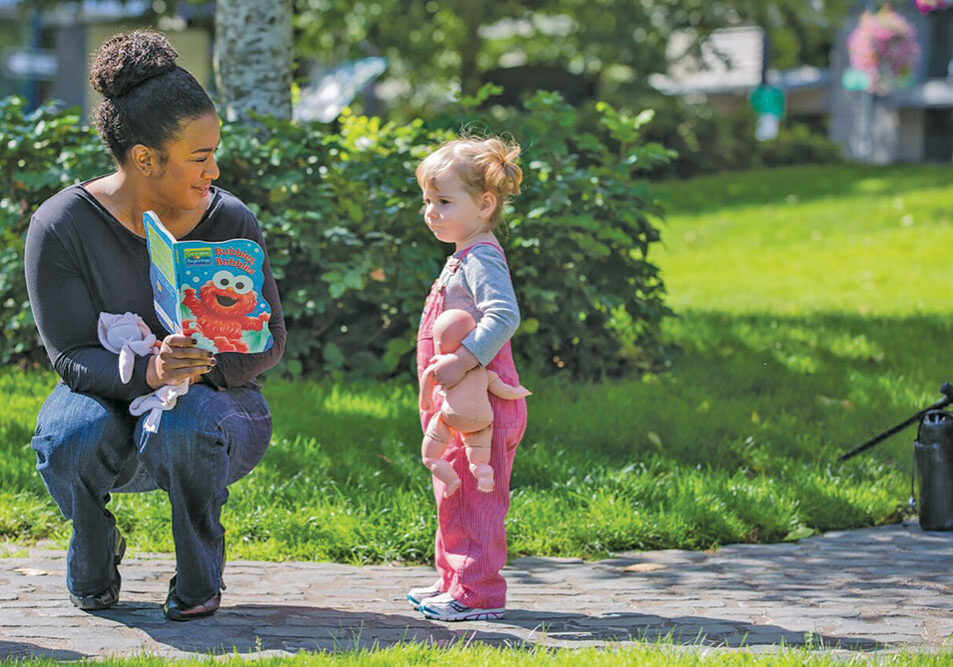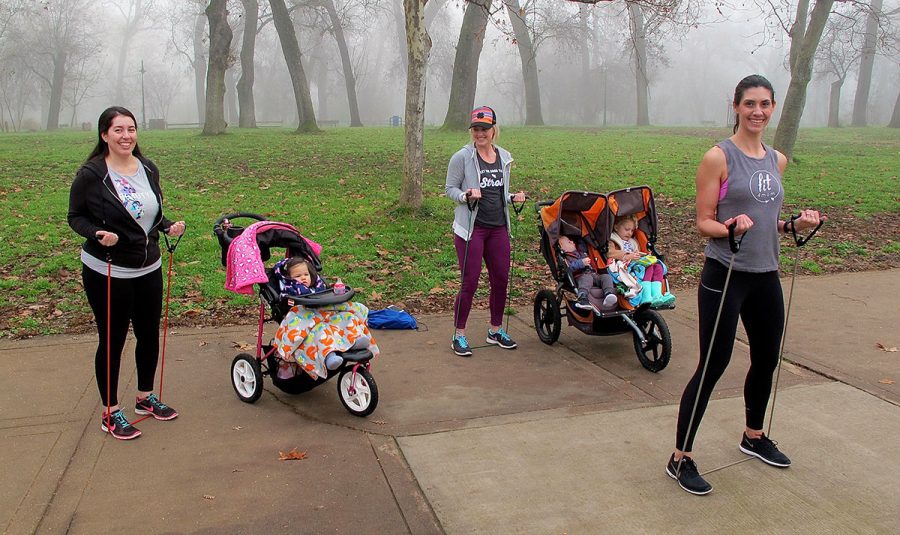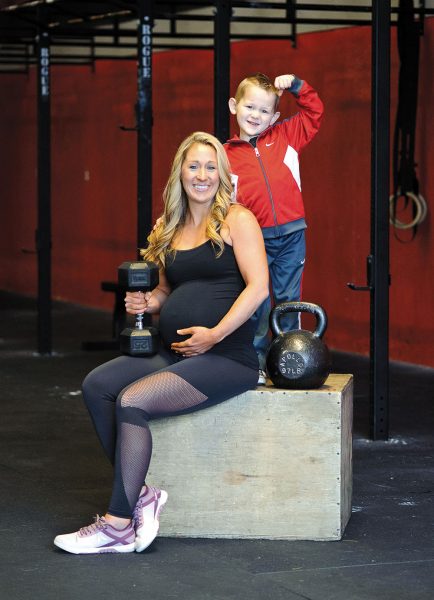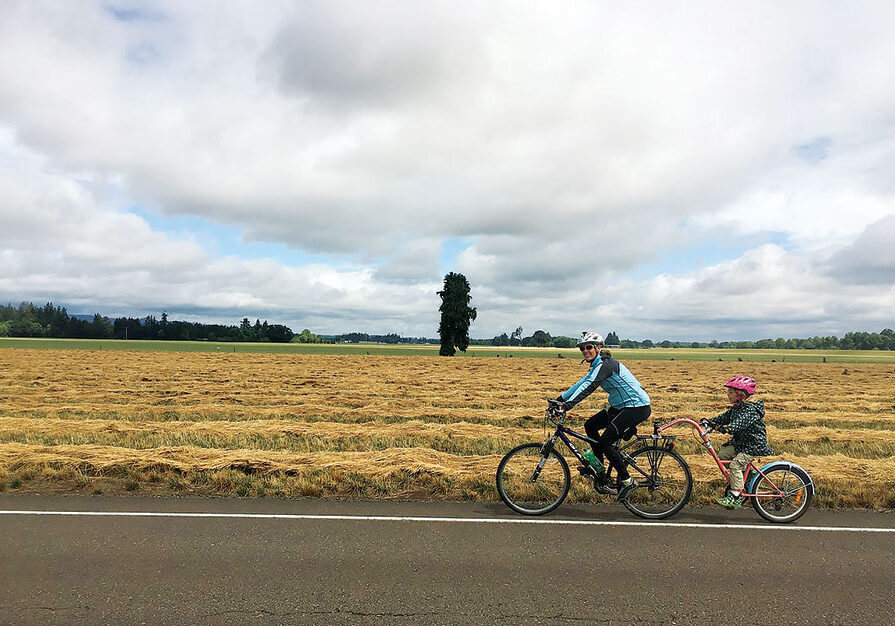Growing Up Fit
Family Fitness, Age by Age
Childhood may seem to move at a faster pace these days, but children don’t. New research from the American Heart Association shows that today’s children are slower and less fit than their parents were: modern kids take about 90 seconds longer to run a mile than their predecessors did 30 years ago, and children’s cardiovascular fitness has dropped 5 percent per decade since 1975. This problem isn’t confined to the U.S., either. According to the World Health Organization, up to 80 percent of the world’s children aren’t getting enough exercise.
You can reverse this troubling trend at home, though. These family fitness tactics for kids of every age will help your brood embrace better health, improved energy, and more fun.
Early Years 0-5: Family Flex
New moms can begin modeling healthy habits from baby’s earliest days, says Bethany Mercer, owner of Fit4Mom in Chico. Most women can return to regular exercise after they’ve received their healthcare provider’s OK at the six-week postpartum checkup, but brand-new moms can take baby steps to fitness even before then, she says. During this phase, skip intense, high-impact cardio and go for gentle walking, deep breathing and Kegel exercises to boost circulation and aid in restoring the pelvic floor, says Mercer. Taking your new baby for a stroll around the neighborhood is a great way to combine exercise, fresh air and family bonding, and it’s fine to start whenever you feel ready (call your doctor if you experience cramping, pain or bleeding during post-partum workouts).
If you’ve already got kids at home, older siblings might enjoy joining your post-partum workouts. Simple core-strengthening exercises that use your own body weight, like planks, bridges and lunges, are easy and fun for kids to emulate, and as beneficial for them as they are for you.
 Elementary Years 6-12: Unsportsmanlike Conduct
Elementary Years 6-12: Unsportsmanlike Conduct
For kids who like sports, the elementary years bring a whirlwind of new opportunities to stay active, from soccer to softball. But less athletic kids may begin to shirk exercise, particularly if they feel inept at sports. Fortunately, competitive sports play isn’t the only way kids can get needed exercise, says Crista Jorgensen of Northstate CrossFit in Redding. Parents can encourage kids of all stripes—sports lovers and sports avoiders alike—to get enough exercise by establishing a regular family outing, like ice-skating, swimming, or a long outdoor walk, visiting parks and public spaces where kids can be active, and exploring less competitive physical pursuits like biking, skateboarding, and gymnastics.
Whatever pastimes kids gravitate toward, it’s important for parents to model that physical activity is enjoyable, says Jorgensen. “Younger kids want to be like their parents, so keep the focus on fun and learning, instead of fitness. Hiking, rock-climbing and bike-riding are great examples of non-competitive activities for the whole family.”
Teen Years 13-18: Safe Shred
Trend-loving teens may hop on the latest fitness bandwagon to attain a “shredded” (teen-speak for well-defined or muscular) physique. But for popular high-intensity workouts like CrossFit and P90x, safety is paramount, says Crista Jorgensen. Because CrossFit utilizes Olympic-style lifts that are extremely technical and require high levels of joint mobility and stability, teens need to learn proper form before adding weight or intensity—and they need to be mature enough to follow instructions carefully, take feedback seriously and back off if they’re feeling joint or muscle pain. “We require kids to go through our Onramp program, not only to learn the movements safely, but also to see if they’re mature enough to handle instruction in a small group setting,” says Jorgensen. If we don’t feel they are ready for a larger group setting, we’d recommend one-on-one coaching to better prepare them.”
Posted in: Community, Health & Nutrition
Comment Policy: All viewpoints are welcome, but comments should remain relevant. Personal attacks, profanity, and aggressive behavior are not allowed. No spam, advertising, or promoting of products/services. Please, only use your real name and limit the amount of links submitted in your comment.
You Might Also Like...

Perfect Pairings to Make Your Holidays Sweeter
Three area bakeries, with husband-and-wife teams, are serving up baked perfection for the holidays – Visit their websites for your seasonal orders When Pie Meets Bread, Redding – Nathan and […]
Bringing the World Home: North State Families Host Foreign Exchange Students
In an evermore connected world, opportunities to learn about other cultures are as easy as pushing a button. Yet none can quite compare with real, one-on-one experiences. Some North State […]

Teens, Depression and Nutrition: Assessment and Support
According to the National Alliance of Mental Illness (NAMI) approximately 1 in 5 youths ages 13 to 18 experience a severe mental disorder at some point during their lives. What […]

Court Appointed Special Advocates for Children: CASA in the North State
A profoundly troubling problem kept Judge David W. Soukup awake at night. As a juvenile court judge, Soukup was seeing children in the foster system enduring perpetual transition: attending multiple […]





